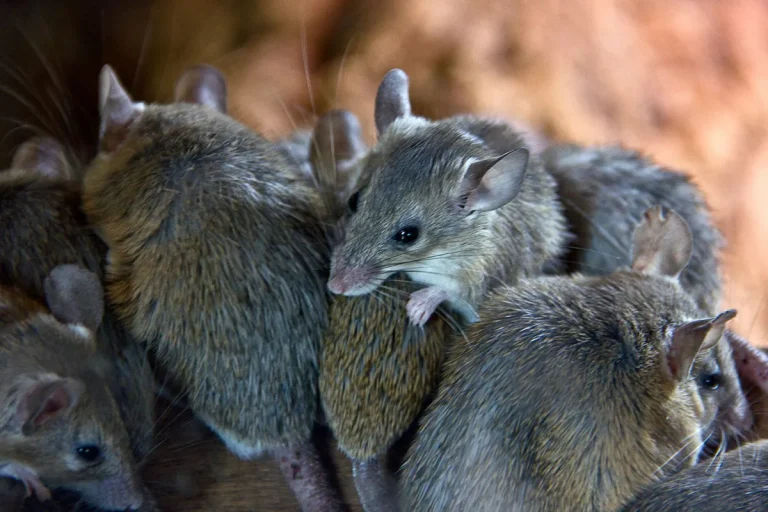Camels have been domesticated and used by humans for thousands of years, mainly for their ability to survive and carry heavy loads across vast desert landscapes. However, beyond their practical functions, camels also carry deep spiritual symbolism and meaning.
If you’re short on time, here’s the essence of the camel’s spiritual significance: Camels symbolize strength, endurance, adaptability, service, humility, and self-sufficiency. They represent the ability to thrive in harsh conditions while maintaining a peaceful, giving nature.
Camels Represent Physical and Mental Fortitude
Withstand Severe Conditions
Camels are well-known for their ability to withstand extreme temperatures, ranging from freezing cold to intense heat. Their thick coats insulate them from temperature changes. Camels can tolerate internal body temperature variations from 34°C to 41.7°C without experiencing side effects.
This allows them to thrive in desert environments, where temperatures can reach 50°C in the daytime and drop below freezing at night.
In addition, camels can go for extended periods without water, surviving on the fat stores in their humps. A camel can drink up to 200 liters of water in three minutes, storing the water in blood cells rather than in the stomach. The blood cells release water into the body gradually as needed.
Camels can go for about two weeks without drinking any water in harsh conditions.
Carry Heavy Burdens
The camel’s physique is perfectly suited to carry heavy loads for extended journeys. They have wide, strongly padded feet with two toes, allowing them to easily walk through the desert sand without sinking.
Powerful thigh muscles enable them to carry loads weighing 400-900 pounds over 20-40 miles per day.
Camels are also used to transport riders, supplies, crops and other heavy materials across arid environments. They can carry such heavy burdens due in part to their elevated shoulder blades and long legs.
Additionally, their bodies distribute fat deposits throughout their humps, back, thighs and other areas to prevent added weight from hindering motion.
Travel Long Distances
Camels are extremely well-adapted for traveling long distances through barren deserts. They have an efficient metabolism that produces less internal heat, minimizing perspiration and allowing them to retain moisture.
Their bodies even recycle urea (a waste product) back into protein rather than expending water to excrete it.
Research indicates camels in caravans have traversed up to 100 miles in a single day at speeds around 2.5 mph. Some camels have been known to sustain a speed of up to 25 mph for short bursts. Their stamina and speed enable them to journey across vast deserts for weeks at a time without requiring much rest along the way.
Camels Symbolize Adaptability and Self-Reliance
Survive on Minimal Resources
Spiritually, the camel’s ability to survive and even thrive with minimal resources represents strength through adaptability. Camels can go for weeks without food and water, getting moisture from the thorny desert plants they eat (just as we may draw inner sustenance from difficult life experiences).
As hardy desert nomads, camels show us that we too can journey through metaphorical deserts in life by adapting our mindset and making the most of what little we have available.
Store Water and Fat
The camel’s humps let it store fat and water for future sustenance. This symbolizes being prepared for hardship by proactively putting aside provisions for the self (whether those provisions be spiritual, emotional, mental or physical).
By managing resources and energy efficiently when times are good, like the provident camel we can build resiliency for challenging seasons ahead. The camel reminds us that with wisdom and planning today, we can support and sustain ourselves through periods of scarcity tomorrow.
Eat Thorny Desert Plants
A camel’s ability to gain nourishment from thorny desert plants symbolizes finding sustenance in the harshest of places when resources are limited. Moreover, it represents being able to digest the “thorny parts” of life – our pains, losses and adversities.
Just as the tenacious camel draws nutrients from prickly fare in the desert, we too can choose to alchemically transform the difficulties we face into sources of wisdom, growth and even blessing – coming out wiser and stronger on the other side.
| Camel Adaptations | Symbolic Meaning |
|---|---|
| Minimal water/food needs | Strength through adaptability |
| Humps to store resources | Preparing for hardship |
| Eating desert plants | Finding sustenance amid adversity |
The symbolic camel reminds us that with adaptability, self-reliance and wisdom, we have the inner resources to traverse whatever metaphorical deserts we may wander through on the winding spiritual path of life.
🐪 Just as the ship of the desert journeys onward through sandstorms by shutting its eyes and nostrils against the wind, so too may we weather the tempests in our lives by turning inward and taking shelter in the oasis within.
Camels Have a Peaceful, Cooperative Temperament
Get Along in Herds
Camels are highly social animals that live together in herds of up to 30 individuals (Bio Explorer). They tend to get along well with one another and work cooperatively, unlike some more aggressive herd animals.
For example, male camels do not fight over territory or females during mating season as other mammals do. This peaceful group dynamic reflects the harmony and unity we all strive for in our spiritual communities.
Rarely Show Aggression
It is rare to see camels display outright aggression or violence, even when resources are scarce in the desert climate (American Museum of Natural History). They patiently wait their turn at an oasis rather than fighting for water.
Their high tolerance for discomfort and ability to conserve water may reduce conflict over resources.
Likewise, cultivating patience helps us avoid anger or aggression towards others when resources seem limited. Camels remind us we can be at peace even in scarcity.
Bond Deeply with Humans
Throughout history, nomads have developed close bonds with their camel companions. Many rely on them for transportation and nourishment in harsh deserts. Camels will affectionately nuzzle their owners and respond to names (National Geographic).
This emotional connection reflects the deep spiritual kinship humans can form with animals.
Some fun camel facts:
- Camels can form strong attachments to other animal species like horses and dogs!
- Baby camels are called calves and are born without humps – the humps develop around age 1 🐪
- Camels can completely close their nostrils during sandstorms 😮
| Species | # of Humps |
|---|---|
| Dromedary Camel | 1 |
| Bactrian Camel | 2 |
The close, nurturing friendship between a camel and its owner mirrors the spiritual connection between cared for and caretaker. Their calm presence encourages humans to embody peace. What amazing creatures!
Camels Represent Service, Sacrifice and Humility
Give Rides and Labor
Camels are known as the “ships of the desert” due to their ability to transport both people and goods across vast desert terrain. They were domesticated over 3,000 years ago specifically for this purpose of bearing loads while traveling long distances with little food or water.
Throughout history, camels provided essential service by giving rides and transporting heavy items like wood, produce, spices, and wares across trade routes connecting Asia, Africa, and Europe. Caravans traversing inhospitable landscapes relied on the strength and stamina of camels to reach their destinations.
Even today, hundreds of thousands of pastoral peoples depend on camels to provide transport and sustenance across arid biomes.
Appear Unassuming
Despite their indispensable role facilitating trade and movement for centuries, camels seem like docile, even silly creatures. Their long spindly legs ending in oversized feet give them an ungainly appearance. They move slowly at an ambling pace and their shaggy hair makes them look disheveled.
However, this unassuming exterior belies an incredible physiological resilience – they can lose up to 30% of their body mass in water loss, endure temperature extremes from freezing nights to blistering 120°F (50°C) desert days, while needing very little food.
Camels perfectly embody the idiom “don’t judge a book by its cover”.
Kneel to Receive Loads
An even more astonishing trait is the camel’s willingness to sacrifice comfort for the loads they bear. Camels possess two rows of thick calluses on their chest and front legs specifically to help them kneel on hard hot sand. Still, kneeling directly on scorching ground must be painful.
Yet, they calmly and without complaint, kneel or squat down for hours so their masters can load them up with cargo weighing hundreds of pounds. They display complete humility and obedience, despite their superior size and strength compared to humans.
The camel’s ability to set aside self-regard and lower itself to serve someone or something greater provides an excellent spiritual parallel for people. Taking on difficulties or challenges for the sake of others, rather than selfish motivations, is a noble virtue.
Their gritty endurance shown by persevering for long stretches without comfort or rest also sets a powerful example to keep going despite hardships.
Camels in Religious Stories and Worship
Camels in Islam
Camels hold great spiritual and symbolic importance in Islam. They are mentioned over 20 times in the Quran and were vital to early Muslim communities in Arabia for transportation and sustenance in the harsh desert environment.
Several hadiths (sayings of the Prophet Muhammad) emphasize the virtues of camels as faithful companions to humanity.
One famous story tells of how Allah (God) sent a camel to Prophet Salih and the Thamud tribe as a sign of faith. However, most of the tribe killed the she-camel against Allah’s command, for which they were punished. This story carries a moral of heeding God’s messengers and signs.
Camels were also the usual form of transport for important Islamic rituals like the Hajj pilgrimage to Mecca. Even today, many pilgrims arrive on camelback to commemorate the traditions of early Muslims.
The camel’s resilience and ability to thrive in the desert represents the hardship and spiritual journey believers take to demonstrate devotion to God.
Camels in Christianity
While camels are not mentioned specifically in the Bible, they do appear symbolically in several biblical stories as beasts of burden. As Judea and the Middle East had no horses or donkeys at the time, camels were domesticated and used extensively for long trade routes through the desert.
A well-known passage describes the difficulties of entering heaven as analogous to a camel passing through the eye of a needle. This hyperbole underscores how humanity’s material possessions can come between them and God.
The camel, being a large pack animal, represents the baggage of wealth and earthly attachments.
Camels in Judaism
Camels play a small but symbolically important role in several Old Testament stories in Judaism. Being suited to desert survival, they were essential for trade and travel in Biblical times. Hence rules for treatment of camels and other pack animals can be found in Exodus, Leviticus and Deuteronomy.
When Rebekah arrives at Isaac’s home riding a camel to become his wife, it signifies her noble character and purity to enter sacred matrimony. Later, camel’s milk sustains the prophet Elijah strengthening him to hear God’s voice.
Camels hence represent survival, self-sacrifice and preparation to receive divine communion.
Conclusion
With their exceptional abilities to endure harsh desert landscapes, carry heavy burdens across vast distances, and maintain a peaceful, cooperative nature, camels have come to symbolize many noble spiritual qualities.
Strength, resilience, adaptability, humility, selflessness, and harmonious community are some of the virtues camels represent through their attributes and behaviors. Across religions and cultures, camels stand as icons of the human capacity to overcome adversity with grace while serving others with compassion.






